Clasificacion de WPT por Distancia
Comparacion de metodos WPT
 Eficiencia de los sistemas de transmisión de energía inalámbrica en función de la distancia entre el transmisor y el receptor [75]
Eficiencia de los sistemas de transmisión de energía inalámbrica en función de la distancia entre el transmisor y el receptor [75] Ilustración de las regiones de campo lejano, campo cercano radiante y campo cercano reactivo cuando se irradia desde una antena con un diámetro de 0,1 metros en frecuencias de 2,4 GHz (izquierda) y 100 GHz (derecha). Esta ilustración demuestra que en el régimen de ondas milimétricas, la TIP basada en EM procedente de una antena de tamaño mediano a menudo da como resultado que los receptores estén ubicados en el campo cercano radiante [78]
Ilustración de las regiones de campo lejano, campo cercano radiante y campo cercano reactivo cuando se irradia desde una antena con un diámetro de 0,1 metros en frecuencias de 2,4 GHz (izquierda) y 100 GHz (derecha). Esta ilustración demuestra que en el régimen de ondas milimétricas, la TIP basada en EM procedente de una antena de tamaño mediano a menudo da como resultado que los receptores estén ubicados en el campo cercano radiante [78]Clasificación de WPT Submarina UWPT
 Tabla 1
Métodos WPT de suministro de energía, principios, principales ventajas y posibles deficiencias de los
dispositivos submarinos típicos[41]
Tabla 1
Métodos WPT de suministro de energía, principios, principales ventajas y posibles deficiencias de los
dispositivos submarinos típicos[41] Diagrama lógico de control de un sistema de carga inalámbrica subacuática como referencia[41]
Diagrama lógico de control de un sistema de carga inalámbrica subacuática como referencia[41]Métodos radiactivos o campo lejano
 Diagrama de bloques de un sistema TIP radiante genérico y la estructura del receptor de energía. [78]
Diagrama de bloques de un sistema TIP radiante genérico y la estructura del receptor de energía. [78]características
Más flexible y particularmente adecuada para la multidifusión de energía, permite que el transmisor/receptor se mueva incluso sin linea de vision en un entorno sin línea de visión (NLoS).[0] [14].
A diferencia del campo cercano reactivo, donde el acoplamiento entre
antenas es principalmente de naturaleza magnética con una rápida
disminución con la distancia, y del campo lejano, donde se mantiene la
propagación de ondas planas, en el campo cercano radiante la forma de
onda es casi El patrón esférico y de radiación varía significativamente con la
distancia. Esta característica del campo cercano radiante implica que algunos
resultados existentes en la literatura sobre TIP radiante obtenidos en el
campo lejano ya no serán válidos [78]
Desventaja
WPT Laser
Utilizan tecnología láser, denominados transferencia de energía láser (LPT) [75] El LWPT antes mencionado se basa en el efecto fotovoltaico (PV) del láser y tiene la ventaja [148]
funcionamiento
Estructura
En transferencia simultánea de energía e información de ondas de luz (SLIPT) [151]
WPT Microondas
funcionamiento
Las microondas es generado por un magnetrón, que funciona con un generador de CC de alto voltaje. El microondas pasa a través de una guía de ondas y luego es irradiado por la antena transmisora. La antena transmisora puede diseñarse para poder orientar la potencia radiada hacia la región de recolección [114] Con un conjunto desfasador en el transmisor [100]
Estructura
Un circuito rectificador siempre está compuesto por un filtro de entrada, una red de adaptación de impedancia, un diodo y un filtro de salida. [141]
El filtro de entrada se utiliza para suprimir los armónicos producidos por el diodo. [141]
El filtro de salida se utiliza para obstruir la fundamental y los armónicos. [141]
La red de adaptación de impedancia se emplea para conseguir una adaptación conjugada en la interfaz de entrada del circuito rectificador. [141]
Estructura
El microondas es más adecuado para su aplicación en medio aéreo debido a su alta frecuencia y longitud de onda corta [45]
WPT RF
WPT Ultrasonica
Diseño
Métodos de Campo cercano no radiativos
Características
Los métodos no radiativos (por ejemplo,
capacitivos e inductivos) pueden logran eficiencias generales más altas, pero
solo pueden operar en distancias más cortas (en comparación con el tamaño del
transmisor/receptor)[1]
Los sistemas TIP de campo cercano transmiten energía a través de bobinas, son muy eficientes, pero sólo pueden utilizarse para cargar dispositivos dentro de un alcance muy limitado. [0]
Para operar el sistema en resonancia, era necesario aumentar la frecuencia de operación. [15]
WPT Inductiva
Teoria de la induccion
Estructura
WPT Acoplamiento inductivo
WPT BASADA EN RESONANCIA / Inductiva Resonante / Resonante magnética / resonancia acoplada magnéticamente
Las WPT inductivas aplicadas a los vehículos eléctricos suelen ser sistemas resonantes [100], el sistema eléctrico está diseñado para funcionar en resonancia de modo que se incorporen redes reactivas (denominadas redes de compensación) en los lados primario y secundario.
Funcionamiento
Estructura
El acoplamiento electromagnético Un rectificador de una sola etapa es suficiente para proporcionar un alto voltaje de entrada. Los transistores pueden usarse como diodos o interruptores en rectificadores[8].
La red de compensación resonante elimina el componente de potencia reactiva del circuito y determina las características de salida eléctrica del sistema MC-WPT[65][66]
Sistemas controlados
 Formas de flujo de potencia en el sistema MCR-WPT. Diagrama de circuito del sistema MCR-WPT. S1 ~ S4 denotan los interruptores del inversor y D1 ~ D4 denotan los diodos del rectificador. E1 es la fuente de CC de entrada, Cd2 es la capacitancia del filtro y RL es la resistencia de carga. [142]
Formas de flujo de potencia en el sistema MCR-WPT. Diagrama de circuito del sistema MCR-WPT. S1 ~ S4 denotan los interruptores del inversor y D1 ~ D4 denotan los diodos del rectificador. E1 es la fuente de CC de entrada, Cd2 es la capacitancia del filtro y RL es la resistencia de carga. [142]Otros convertidores
WPT capacitiva
Estructura
estructura
mismos bloques en los lados del transmisor y del receptor, la diferencia con la IPT es que tienen placas en vez de bobinas [75]
En submarina
Hibridos
IPT Vs CPT
Sistemas WPT omnidireccionales
Posicionamiento guiado
Posicionamiento libre: movimiento de la bobina primaria En este caso, el posicionamiento del receptor para que coincida correctamente con el transmisor y el receptor se realiza cambiando la posición de la bobina primaria para moverla hacia el receptor
el transmisor está equipado con un sistema de detección y localización del receptor. Después de detectar el receptor, el transmisor mueve la bobina del lado del devanado primario hacia el receptor. La ventaja de esta solución, al igual que en el caso del posicionamiento guiado, es el uso de una sola bobina en el transmisor. El ajuste preciso de la posición entre las bobinas requiere el uso de un mecanismo apropiado que permita cambiar la posición horizontal de la bobina en el transmisor.
Destinado para Vehiculos electricos
Por Transmisión de Energía y Datos
 c) Un esquema WPIDT práctico mediante la multiplexación de reguladores CC-CC en cascada para transmisor de datos. La línea roja indica la ruta del flujo de energía y la línea azul indica la ruta de transmisión de datos [142]
c) Un esquema WPIDT práctico mediante la multiplexación de reguladores CC-CC en cascada para transmisor de datos. La línea roja indica la ruta del flujo de energía y la línea azul indica la ruta de transmisión de datos [142]LA transmisión simultanea de energía y datos SWPDT
en sistemas SWPIT de alta potencia, los métodos que multiplexan las bobinas de potencia para transmitir señales de datos con una portadora de frecuencia diferente [143][144][145][146] no son aplicables a un sistema MCR-WPT a larga distancia [142]
 VENTAJAS, DESVENTAJAS Y APLICACIONES DE LOS SISTEMAS PC-SWPDT, HFDC-SWPDT, MIC-SWPDT E ICHC-SWPDT [140]
VENTAJAS, DESVENTAJAS Y APLICACIONES DE LOS SISTEMAS PC-SWPDT, HFDC-SWPDT, MIC-SWPDT E ICHC-SWPDT [140]La transferencia inalámbrica simultánea de información y energía (SWIPT) [35] Las redes inalámbricas de próxima generación se conciben como una convergencia de comunicación, detección ambiental y computación distribuida. [11] estas redes pueden tener nodos participantes con heterogeneidad de requisitos de energía variados.
Transferencia de energía y datos a través de un solo canal (SC-SWPDT)
SWPDT basado en portador de energía (PC-SWPDT)
Transferencia de energía y datos a través de múltiples canales (MC-SWPDT).
sistema SW-PDT de múltiples canales inductivos (MICSWPDT)
sistema SWPDT de canales
híbridos inductivo-capacitivo (ICHC- SWPDT)
Destinados para Dispositivos médicos implantables IMD
Los métodos para proporcionar energía a los IMD se pueden clasificar en dos tipos:
Interno, fuentes de energía desde el cuerpo humano, tienen la desventaja de proporcionar niveles de potencia extremadamente bajos e impredecibles que impiden su adopción en la mayoría de las aplicaciones [10]
Extracorporal una fuente de energía externa se acopla al recolector de energía implantado dentro del cuerpo, que cargará un dispositivo de acumulación [10].
Métodos comunes de los externa son : radiofrecuencia, inducción electromagnética u ondas de ultrasonido [10]
Bibliografia
[0] J. Huang, Y. Zhou, Z. Ning, and H. Gharavi, “Wireless Power Transfer and Energy Harvesting: Current Status and Future Prospects,” IEEE Wirel Commun, vol. 26, no. 4, pp. 163–169, Aug. 2019, doi: 10.1109/MWC.2019.1800378.
[1] V. F. G. Tseng, S. S. Bedair, and N. Lazarus, “Acoustic wireless power transfer with receiver array for enhanced performance,” WPTC 2017 - Wirel. Power Transf. Conf., no. March, 2017, doi: 10.1109/WPT.2017.7953842.
[2] A. A. Eteng, H. H. Goh, S. K. A. Rahim, and A. Alomainy, “A Review of Metasurfaces for Microwave Energy Transmission and Harvesting in Wireless Powered Networks,” IEEE Access, vol. 9, pp. 27518–27539, 2021, doi: 10.1109/ACCESS.2021.3058151.
[3] W. X. Lian et al., “A Fully-Integrated CMOS Dual-Band RF Energy Harvesting Front-End Employing Adaptive Frequency Selection,” IEEE Access, vol. 11, no. July, pp. 74121–74135, 2023, doi: 10.1109/ACCESS.2023.3296145.
[4] F. Mazzilli, C. Lafon, and C. Dehollain, “A 10.5 cm ultrasound link for deep implanted medical devices,” IEEE Trans. Biomed. Circuits Syst., vol. 8, no. 5, pp. 738–750, 2014, doi: 10.1109/TBCAS.2013.2295403.
[5] J. Charthad, M. J. Weber, T. C. Chang, and A. Arbabian, “A mm-Sized Implantable Medical Device (IMD) With Ultrasonic Power Transfer and a Hybrid Bi-Directional Data Link,” IEEE J. Solid-State Circuits, vol. 50, no. 8, pp. 1741–1753, 2015, doi: 10.1109/JSSC.2015.2427336.
[6] T. Lawry, “A HIGH PERFORMANCE SYSTEM FOR WIRELESS TRANSMISSION OF POWER AND DATA THROUGH SOLID METAL ENCLOSURES,” Polytechnic Institut, 2011. [Online]. Available: https://www.proquest.com/openview/52a3fad879bb5d8a89f78a15115e8b66/1?pq-origsite=gscholar&cbl=18750
[7] C. Huang, T. Kawajiri, and H. Ishikuro, “A near-optimum 13.56 MHz active rectifier with circuit-delay real-time calibrations for high-current biomedical implants,” Proc. Cust. Integr. Circuits Conf., vol. 2015-Novem, no. 8, pp. 1797–1809, 2015, doi: 10.1109/CICC.2015.7338391.
[8] M. A. Ghanad and C. Dehollain, “A passive CMOS rectifier with leakage current control for medical implants,” 2012 19th IEEE Int. Conf. Electron. Circuits, Syst. ICECS 2012, pp. 520–523, 2012, doi: 10.1109/ICECS.2012.6463694.
[9] J. Yang, Y. Shi, W. Y. Wei, and H. Shen, “A wireless power transfer system based on impedance matching network,” Int. J. RF Microw. Comput. Eng., vol. 30, no. 12, pp. 1–10, 2020, doi: 10.1002/mmce.22437.
[10] A. Ballo, M. Bottaro, and A. D. Grasso, “A review of power management integrated circuits for ultrasound-based energy harvesting in implantable medical devices,” Appl. Sci., vol. 11, no. 6, pp. 1–21, 2021, doi: 10.3390/app11062487.
[11] M. Di Renzo et al., “Smart radio environments empowered by reconfigurable AI meta-surfaces: an idea whose time has come,” Eurasip J. Wirel. Commun. Netw., vol. 2019, no. 1, 2019, doi: 10.1186/s13638-019-1438-9.
[12] Xie, L., Shi, Y., Hou, Y.T., Lou, A.: Wireless power transfer and applications to sensor networks. IEEE Wirel. Commun. 20, 140–145 (2013)
[13] T. Helgesen and M. Haddara, “Wireless power transfer solutions for ‘Things’ in the internet of things,” in Advances in Intelligent Systems and Computing, Springer Verlag, 2019, pp. 92–103. doi: 10.1007/978-3-030-02686-8_8.
[14] Y. Zeng et al., “Communications and Signals Design for Wireless Power Transmission,” IEEE Trans. Commun., vol. 65, no. 5, May 2017, pp. 2264–90.
[15] A. Laha, A. Kalathy, M. Pahlevani, and P. Jain, “A Comprehensive Review on Wireless Power Transfer Systems for Charging Portable Electronics,” Eng, vol. 4, no. 2. Multidisciplinary Digital Publishing Institute (MDPI), pp. 1023–1057, Jun. 01, 2023. doi: 10.3390/eng4020061.
[16] A. Baraskar, H. Chen, Y. Yoshimura, S. Nagasaki, and T. Hanada, “Verify the Wireless Power Transmission in Space using Satellite to Satellite System,” International Journal on Emerging Technologies, vol. 12, no. 2, pp. 110–118, 2021, [Online]. Available: https://hal.science/hal-03525749
[17]. Rodenbeck, C. T., Jaffe, P. I., Strassner II, B. H., Hausgen, P. E., McSpadden, J. O., Kazemi, H., ... & Self, A. P. (2021). Microwave and Millimeter Wave Power Beaming. IEEE Journal of Microwaves, 1(1), 229-259.
[18]. Kumar, K., & Bhattacharya, M. (2019, March). Modelling and Efficiency Analysis of Microwave Wireless Power Transfer System. In 2019 Innovations in Power and Advanced Computing Technologies (iPACT) (Vol. 1, pp. 1-7). IEEE.
[19] . Chawla, N., Tosunoglu, S.: State of the art in inductive charging for electronic appliances and its future in transportation. In: 2012 Florida Conference on Recent Advances in Robotics, pp. 1–7 (2012)
[20] Lu, X., Wang, P., Niyato, D., Kim, D.I., Han, Z.: Wireless charging technologies: fundamentals, standards, and network applications. IEEE Commun. Surv. Tutor. 18, 1413– 1452 (2016)
[21] Lu, X., Wang, P., Niyato, D., Han, Z.: Resource allocation in wireless networks with RF energy harvesting and transfer. IEEE Netw. 29, 68–75 (2015)
[22] Imura, T., Hori, Y.: Maximizing air gap and efficiency of magnetic resonant coupling for wireless power transfer using equivalent circuit and Neumann formula. IEEE Trans. Ind. Electron. 58, 4746–4752 (2011)
[23] Beh, T.C., Kato, M., Imura, T., Oh, S., Hori, Y.: Automated impedance matching system for robust wireless power transfer
[24] Renzo, M.D., Lu, W.: System-level analysis and optimization of cellular networks with simultaneous wireless information and power transfer: stochastic geometry modeling. IEEE Trans. Veh. Technol. 66, 2251–2275 (2017)
[25] Brown, W.C.: The history of power transmission by radio waves. IEEE Trans. Microw. Theory Tech. 32, 1230–1242 (1984)
[26] Dai, J., Ludois, D.C.: Wireless electric vehicle charging via capacitive power transfer through a conformal bumper. In: 2015 IEEE Applied Power Electronics Conference and Exposition (APEC), pp. 3307–3313 (2015)
[27] Hui, S.Y.R., Zhong, W., Lee, C.K.: A critical review of recent progress in mid-range wireless power transfer. IEEE Trans. Power Electron. 29, 4500–4511 (2014)
[28] Kurs, A., Karalis, A., Moffatt, R., Joannopoulos, J.D., Fisher, P., Soljačić, M.: Wireless power transfer via strongly coupled magnetic resonances. Science 317, 83–86 (2007)
[29]. Dickinson, R. M. T. (2002). Wireless Power Transmission Technology State-Of-The-Art. IAF abstracts, 34th COSPAR Scientific Assembly, 741.
[30] . Huang, K., Lau, V.K.: Enabling wireless power transfer in cellular networks: architecture, modeling and deployment. IEEE Trans. Wirel. Commun. 13, 902–912 (2014)
[31] Ding, P.-P., Bernard, L., Pichon, L., Razek, A.: Evaluation of electromagnetic fields in human body exposed to wireless inductive charging system. IEEE Trans. Magn. 50, 1037–1040 (2014)
[32] . Dai, J., Ludois, D.C.: A survey of wireless power transfer and a critical comparison of inductive and capacitive coupling for small gap applications. IEEE Trans. Power Electron. 30, 6017–6029 (2015)
[33] Hui, S.: Planar wireless charging technology for portable electronic products and Qi. Proc. IEEE 101, 1290–1301 (2013)
[34] Xie, L., Shi, Y., Hou, Y.T., Sherali, H.D.: Making sensor networks immortal: an energy-renewal approach with wireless power transfer. IEEE/ACM Trans. Netw. 20, 1748–1761 (2012)
[35] A. Costanzo and D. Masotti, “Energizing 5G,” IEEE Microw. Mag., vol. 18, no. April, pp. 125–136, 2017, doi: 10.1109/MMM.2017.2664001.
[36] Boshkovska, E., Koelpin, A., Ng, D.W.K., Zlatanov, N., Schober, R.: Robust beamforming for SWIPT systems with non-linear energy harvesting model. In: 2016 IEEE 17th International Workshop on Signal Processing Advances in Wireless Communications (SPAWC), pp. 1–5 (2016)
[37] Clerckx, B., Bayguzina, E.: Waveform design for wireless power transfer. IEEE Trans. Signal Process. 64, 6313–6328 (2016)
[38] Galinina, O., Tabassum, H., Mikhaylov, K., Andreev, S., Hossain, E., Koucheryavy, Y.: On feasibility of 5G-grade dedicated RF charging technology for wireless-powered wearables. IEEE Wirel. Commun. 23, 28–37 (2016)
[39] . Cannon, B.L., Hoburg, J.F., Stancil, D.D., Goldstein, S.C.: Magnetic resonant coupling as a potential means for wireless power transfer to multiple small receivers. IEEE Trans. Power Electron. 24, 1819–1825 (2009)
[40] A. W. S. Putra, H. Kato, and T. Maruyama, “Hybrid optical wireless power and data transmission system,” in 2020 IEEE PELS Workshop on Emerging Technologies: Wireless Power Transfer, WoW 2020, Institute of Electrical and Electronics Engineers Inc., Nov. 2020, pp. 374–376. doi: 10.1109/WoW47795.2020.9291276.
[41] D. Wang, J. Zhang, S. Cui, Z. Bie, F. Chen, and C. Zhu, “The state-of-the-arts of underwater wireless power transfer: A comprehensive review and new perspectives,” Renewable and Sustainable Energy Reviews, vol. 189. Elsevier Ltd, Jan. 01, 2024. doi: 10.1016/j.rser.2023.113910.
[42] Dai J, Ludois DC. A survey of wireless power transfer and a critical comparison of inductive and capacitive coupling for small gap applications. IEEE Trans Power Electron 2015;30:6017–29. https://doi.org/10.1109/TPEL.2015.2415253.
[43] Sasaki S, Tanaka K, Maki K. Microwave power transmission technologies for solar power satellites. Proc IEEE 2013;101:1438–47. https://doi.org/10.1109/ JPROC.2013.2246851.
[44] Mayordomo I, Drager ¨ T, Spies P, Bernhard J, Pflaum A. An overview of technical challenges and advances of inductive wireless power transmission. Proc IEEE 2013;101:1302–11. https://doi.org/10.1109/JPROC.2013.2243691.
[45] Pavlidis D, Hartnagel HL. Dielectric waveguides for underwater transmission of high microwave power. In: 1977 IEEE MTT-S international microwave symposium digest. IEEE; 1977. p. 156–9.
[46] Shih P-J, Shih W-P. Design, fabrication, and application of bio-implantable acoustic power transmission. J Microelectromech Syst 2010;19:494–502. https:// doi.org/10.1109/JMEMS.2010.2042568
[47] Liu Q, Wu J, Xia P, Zhao S, Chen W, Yang Y, et al. Charging unplugged: will distributed laser charging for mobile wireless power transfer work. IEEE Veh Technol Mag 2016;11:36–45. https://doi.org/10.1109/MVT.2016.2594944.
[48] Jin K, Zhou W. Wireless laser power transmission: a review of recent progress. IEEE Trans Power Electron 2018;34:3842–59. https://doi.org/10.1109/ TPEL.2018.2853156.
[49] Summerer L, Purcell O. Concepts for wireless energy transmission via laser. Europeans Space Agency (ESA)-Advanced Concepts Team; 2009.
[50] Lu F, Zhang H, Mi C. A review on the recent development of capacitive wireless power transfer technology. Energies 2017;10:1752. https://doi.org/10.3390/ en10111752.
[51] Moon J. High-frequency capacitive wireless power transfer technologies. J. Power Electronics 2021;21:1243–57. https://doi.org/10.1007/s43236-021-00262-4.
[52] Wang Z, Zhang Y, He X, Luo B, Mai R. Research and application of capacitive power transfer system: a review. Electronics 2022;11:1158. https://doi.org/ 10.3390/electronics11071158.
[53] Theodoridis MP. Effective capacitive power transfer. IEEE Trans Power Electron 2012;27:4906–13. https://doi.org/10.1109/TPEL.2012.2192502.
[54] Lu F. High power capacitive power transfer for electric vehicle charging applications. PhD Thesis 2017. https://deepblue.lib.umich.edu/handle/2027. 42/138493.
[55] Lu F, Zhang H, Hofmann H, Mi C. A double-sided LCLC-compensated capacitive power transfer system for electric vehicle charging. IEEE Trans Power Electron 2015;30:6011–4. https://doi.org/10.1109/TPEL.2015.2446891.
[56] Rim CT, Mi C. Wireless power transfer for electric vehicles and mobile devices. John Wiley & Sons; 2017.
[57] Tamura M, Naka Y, Murai K, Nakata T. Design of a capacitive wireless power transfer system for operation in fresh water. IEEE Trans Microw Theor Tech 2018; 66:5873–84. https://doi.org/10.1109/TMTT.2018.2875960.
[58] Lu F, Zhang H, Mi C. A two-plate capacitive wireless power transfer system for electric vehicle charging applications. IEEE Trans Power Electron 2017;33:964–9. https://doi.org/10.1109/TPEL.2017.2735365.
[59] Zhang H, Lu F, Hofmann H, Liu W, Mi CC. A four-plate compact capacitive coupler design and LCL-compensated topology for capacitive power transfer in electric vehicle charging application. IEEE Trans Power Electron 2016;31: 8541–51.
[60] Zhang H, Lu F, Hofmann H, Liu W, Mi CC. Six-plate capacitive coupler to reduce electric field emission in large air-gap capacitive power transfer. IEEE Trans Power Electron 2017;33:665–75. https://doi.org/10.1109/TPEL.2017.2662583
[61] Infineon Application Brochure Wireless Charging Update. Available online: https://www.infineon.com/dgdl/InfineonWirelessCharging-ApplicationBrochure-v06_00-EN.pdf?fileId=5546d4625b0fb03b015b0fd1aab50000 (accessed on 12 January 2023).
[62] Zhang H, Lu F. Feasibility study of the high-power underwater capacitive wireless power transfer for the electric ship charging application. 2019 IEEE Electric Ship Technologies Symposium (ESTS); 2019. p. 231–5. https://doi.org/10.1109/ ESTS.2019.8847929.
[63] Dionigi M, Costanzo A, Mastri F, Mongiardo M, Monti G. Recent advances on magnetic resonant wireless power transfer. Wireless Power Transfer 2022: 217–70. https://doi.org/10.1201/9781003340072-6.
[64] Mou X, Gladwin DT, Zhao R, Sun H. Survey on magnetic resonant coupling wireless power transfer technology for electric vehicle charging. IET Power Electron 2019;12:3005–20. https://doi.org/10.1049/iet-pel.2019.0529
[65] Beh TC, Kato M, Imura T, Oh S, Hori Y. Automated impedance matching system for robust wireless power transfer via magnetic resonance coupling. IEEE Trans Ind Electron 2012;60:3689–98. https://doi.org/10.1109/TIE.2012.2206337.
[66] Wang C-S, Stielau OH, Covic GA. Design considerations for a contactless electric vehicle battery charger. IEEE Trans Ind Electron 2005;52:1308–14. https://doi. org/10.1109/TIE.2005.855672
[67] Song K, Wei R, Yang G, Zhang H, Li Z, Huang X, et al. Constant current charging and maximum system efficiency tracking for wireless charging systems employing dual-side control. IEEE Trans Ind Appl 2019;56:622–34. https://doi.org/ 10.1109/TIA.2019.2942278.
[68] Seo D-W, Lee J-H. Frequency-tuning method using the reflection coefficient in a wireless power transfer system. IEEE Microw Wireless Compon Lett 2017;27: 959–61. https://doi.org/10.1109/LMWC.2017.2750023. [69] Li W, Zhao H, Li S, Deng J, Kan T, Mi CC. Integrated LCC compensation topology for wireless charger in electric and plug-in electric vehicles. IEEE Trans Ind Electron 2015;62:4215–25. https://doi.org/10.1109/TIE.2014.2384003.
[70] Li S, Li W, Deng J, Nguyen TD, Mi CC. A double-sided LCC compensation network and its tuning method for wireless power transfer. IEEE Trans Veh Technol 2015; 64:2261–73. https://doi.org/10.1109/TVT.2014.2347006.
[71] Li W, Zhao H, Deng J, Li S, Mi CC. Comparison study on SS and double-sided LCC compensation topologies for EV/PHEV wireless chargers. IEEE Trans Veh Technol 2016;65:4429–39. https://doi.org/10.1109/TVT.2015.2479938.
[73] Zhang Y, Wei G, Wang C, Yin Y, Feng J, Na T, et al. A hybrid compensation topology with constant current and constant voltage outputs for wireless charging system. IEEE Transactions on Transportation Electrification 2022. https://doi. org/10.1109/TTE.2022.3208195. 1–1.
[74] G. Chen, Y. Sun, J. Huang, B. Zhou, F. Meng, and C. Tang, “Wireless power and data transmission system of submarine cable-inspecting robot fish and its time-sharing multiplexing method,” Electronics (Switzerland), vol. 8, no. 8, Aug. 2019, doi: 10.3390/electronics8080838.
[75] K. Detka and K. Górecki, “Wireless Power Transfer—A Review,” Energies (Basel), vol. 15, no. 19, 2022, doi: 10.3390/en15197236.
[76] Popovic, Z. Near- and Far-Field Wireless Power Transfer. In Proceedings of the 2017 13th International Conference on Advanced Technologies, Systems and Services in Telecommunications (TELSIKS), Nis, Serbia, 18–20 October 2017.
[77] Lin, W.; Ziolkowski, R.W. Far field wireless power transfer for IoT applications enabled by an ultra-compact and highly-efficient Huygens rectenna. In Proceedings of the 2020 IEEE Wireless Power Transfer Conference (WPTC), Seoul, Korea, 24 December 2020; pp. 69–71. http://doi.org/10.1109/WPTC48563.2020.9295632
[78] Zhang, H.; Shlezinger, N.; Guidi, F.; Dardari, D.; Imani, M.F.; Eldar, Y.C. Near-Field Wireless Power Transfer for 6G Internet of Everything Mobile Networks: Opportunities and Challenges. IEEE Commun. Mag. 2022, 60, 12–18 http://doi.org/10.1109/MCOM.001.2100702
[79] Wang, C.; Xu, W.; Zhang, C.; Wang, M.; Wang, X. Microwave wireless power transmission technology index system and test evaluation methods. EURASIP J. Adv. Signal Process. 2022, 16, 2478 http://doi.org/10.1186/s13634-022-00846-7
[80] Zhang, Q.; Fang, W.; Liu, Q.; Wu, J.; Xia, P.; Yang, L. Distributed Laser Charging: A Wireless Power Transfer Approach. IEEE Internet Things J. 2018, 5, 3853–3864. http://doi.org/10.1109/JIOT.2018.2851070
[81] Wang, X.; Lu, C.; Wang, C.; Liu, P.; Xu, W.; Zhou, Y.; Wang, F. Methods for testing the performance of long-distance wireless power transmission systems. EURASIP J. Wirel. Commun. Netw. 2020, 2020, 2536. http://doi.org/10.1186/s13638-020-01874-3
[82] Dang, K.; Zhang, J.; Zhou, H.; Huang, S.; Zhang, T.; Bian, Z.; Zhang, Y.; Wang, X.; Zhao, S.; Wei, K.; et al. A 5.8-GHz High-Power and High-Efficiency Rectifier Circuit with Lateral GaN Schottky Diode for Wireless Power Transfer. IEEE Trans. Power Electron. 2020, 35, 2247–2252 http://doi.org/10.1109/TPEL.2019.2938769
[83] Zheng, S.; Liu, W.; Pan, Y. Design of an Ultra-Wideband High-Efficiency Rectifier for Wireless Power Transmission and Harvesting Applications. IEEE Trans. Ind. Inform. 2019, 15, 3334–3342.http://doi.org/10.1109/TII.2018.2874460
[84] Van den Bossche, A.; Valchev, V. Inductor and Transformers for Power Electronic; CRC Press: Boca Raton, FL, USA, 2005.
[85] Wen, F.; Chu, X.; Li, Q.; Gu, W. Compensation Parameters Optimization of Wireless Power Transfer for Electric Vehicles. Electronics 2020, 9, 789. http://doi.org/10.3390/electronics9050789
[86] Badwey, M.A.; Abbasy, N.H.; Eldallal, G.M. An efficient design of LC-compensated hybrid wireless power transfer system for electric vehicle charging applications. Alex. Eng. J. 2022, 61, 6565–6580 http://doi.org/10.1016/j.aej.2021.12.016
[87] Sidiku, M.B.; Eronu, E.M.; Ashigwuike, E.C. Review On Wireless Power Transfer: Concepts, Implementations, Challenges, and Mitigation. Niger. J. Technol. 2020, 39, 1206–1215.
[88] Kim, D.; Abu-Siada, A.; Sutinjo, A. State of the art literature review of WPT: Current limitations and solutions on ITP. Electr. Power Syst. Res. 2018, 154, 493–502 http://doi.org/10.1016/j.epsr.2017.09.018
[89] Mohsan, S.A.H.; Khan, M.A.; Rokia LS, R.; Islam, A.; Mahmood, A.; Mazinani, A.; Amjad, H. A review on Research Challenges, Limitation and Practical Solution for Underwater Wireless Power Transfer. Int. J. Adv. Comput. Sci. Appl. 2020, 11, 554–562. http://doi.org/10.14569/IJACSA.2020.0110869
[90] Marcinek, M. Rezonansowy układ przekształtnikowy z aktywn ˛a stabilizacj ˛a punktu pracy w systemach bezstykowego przekazywania energii. Ph.D. Thesis, Zachodniopomorski Uniwersytet Technologiczny w Szczecinie, Szczecin, Poland, 2015.
[91] Kevin, L. Comparative Study of Different Coil Geometries for Wireless Power Transfer. 2016. Available online: https://www.google. com/url?sa=t&rct=j&q=&esrc=s&source=web&cd=&ved=2ahUKEwiXof739aX6AhUBtYsKHbwWDMYQFnoECAgQAQ& url=http%3A%2F%2Futpedia.utp.edu.my%2F17133%2F1%2FFinal%2520Dissertation%2520%2528Final%2529%2520-%252 0Lau%2520Kevin%252016392.pdf&usg=AOvVaw3IoxNm3qaKiYuzHRc362S9 (accessed on 26 September 2022).
[92] Van Wageningen, D.; Staring, T. The Qi Wireless Power Standard. In Proceedings of the 14th International Power Electronics and Motion Control Conference (EPE-PEMC 2010), Ohrid, Macedonia, 6–8 September 2010; pp. 15–25.
[93] Airfuel Standard Consorcium Website. Available online: https://airfuel.org/ (accessed on 26 September 2022)
[94] Lecluyse, C.; Minnaert, B.; Kleemann, M. A Review of the Current State of Technology of Capacitive Wireless Power Transfer. Energies 2021, 14, 5862. http://doi.org/10.3390/en14185862
[95] Iqteit, N.; Yahya, K.; Khan, S.A. Wireless Power Charging in Electrical Vehicles; Intechopen: London, UK, 2021.
[96] Song, S.; Zhang, W.; Jin, Z.; Geng, Q. Analysis of S-S Resonance Compensation Circuit of Electric Vehicle Wireless Power Transfer System. In Proceedings of the IEEE 4th Conference on Energy Internet and Energy System Integration (EI2), Wuhan, China, 15 February 2020; pp. 619–622. http://doi.org/10.1109/EI250167.2020.9347234
[97] Das, H.S.; Rahman, M.M.; Li, S.; Tan, C.W. Electric vehicles standards, charging infrastructure, and impact on grid integration: A technological review. Renew. Sustain. Energy Rev. 2020, 120, 109618 http://doi.org/10.1016/j.rser.2019.109618
[98] Tie, S.F.; Tan, C.W. A review of energy sources and energy management system in electric vehicles. Renew Sustain. Energy Rev. 2013, 20, 82–102 https://linkinghub.elsevier.com/retrieve/pii/S1364032112006910
[99] Ahmad, A.; Alam, M.S.; Chabaan, R. A Comprehensive Review of Wireless Charging Technologies for Electric Vehicles. IEEE Trans. Transp. Electr. 2017, 4, 38–63 https://doi.org/10.1109/TTE.2017.2771619
[100] A. Triviño, J. M. González-González, and J. A. Aguado, “Wireless power transfer technologies applied to electric vehicles: A review,” Energies, vol. 14, no. 6. MDPI AG, Mar. 02, 2021. doi: 10.3390/en14061547.
[101] Triviño-Cabrera, A.; Aguado, J.; González, J. Analytical characterisation of magnetic field generated by ICPT wireless charger. Electron. Lett. 2017, 53, 871–873 http://dx.doi.org/10.1049/el.2017.0968
[102] González-González, J.; Triviño-Cabrera, A.; Aguado, J.; González-González, J.M.; Triviño-Cabrera, A.; Aguado, J.A. Design and Validation of a Control Algorithm for a SAE J2954-Compliant Wireless Charger to Guarantee the Operational Electrical Constraints. Energies 2018, 11, 604 http://dx.doi.org/10.3390/en11030604
[103] Triviño-Cabrera, A.; Ochoa, M.; Fernández, D.; Aguado, J.A. Independent primary-side controller applied to wireless chargers for electric vehicles. In Proceedings of the 2014 IEEE International Electric Vehicle Conference, IEVC 2014, Florence, Italy, 17–19 December 2014; Institute of Electrical and Electronics Engineers Inc.: New York City, NY, USA, 2014
[104] Thrimawithana, D.J.; Madawala, U.K. A primary side controller for inductive power transfer systems. In Proceedings of the IEEE International Conference on Industrial Technology, Via del Mar, Chile, 14–17 March 2010; pp. 661–666.
[105] Miller, J.M.; Onar, O.C.; Chinthavali, M. Primary-side power flow control of wireless power transfer for electric vehicle charging. IEEE J. Emerg. Sel. Top. Power Electron. 2015, 3, 147–162 http://dx.doi.org/10.1109/JESTPE.2014.2382569
[106] Omori, H.; Iga, Y.; Morizane, T.; Kimura, N.; Nakagawa, K.; Nakaoka, M. A novel wireless EV charger using SiC single-ended quasi-resonant inverter for home use. In Proceedings of the 15th International Power Electronics and Motion Control Conference and Exposition, EPE-PEMC 2012 ECCE Europe, Novi Sad, Serbia, 4–6 September 2012
[107] Deng, Q.; Wang, Z.; Chen, C.; Czarkowski, D.; Kazimierczuk, M.K.; Zhou, H.; Hu, W. Modeling and control of inductive power transfer system supplied by multiphase phase-controlled inverter. IEEE Trans. Power Electron. 2019, 34, 9303–9315 http://dx.doi.org/10.1109/TPEL.2018.2886846
[108] Vu, V.B.; Dahidah, M.; Pickert, V.; Phan, V.T. A High-Power Multiphase Wireless Dynamic Charging System with Low Output Power Pulsation for Electric Vehicles. IEEE J. Emerg. Sel. Top. Power Electron. 2020, 8, 3592–3608 http://dx.doi.org/10.1109/JESTPE.2019.2932302
[109] Gonzalez-Gonzalez, J.M.M.; Trivino, A.; Aguado, J.A. Model Predictive Control to Maximize the Efficiency in EV Wireless Chargers. IEEE Trans. Ind. Electron. 2021, 1. http://dx.doi.org/10.1109/TIE.2021.3057006
[110] Wu, H.H.; Gilchrist, A.; Sealy, K.D.; Bronson, D. A high efficiency 5 kW inductive charger for EVs using dual side control. IEEE Trans. Ind. Inform. 2012, 8, 585–595. http://dx.doi.org/10.1109/TII.2012.2192283
[111] Murliky, L.; Porto, R.W.; Brusamarello, V.J.; Rangel de Sousa, F.; Triviño-Cabrera, A. Active Tuning of Wireless Power Transfer System for compensating coil misalignment and variable load conditions. AEU Int. J. Electron. Commun. 2020, 119, 153166.
[112] Wireless Power Transfer for Light-Duty Plug-In/Electric Vehicles and Alignment Methodology; International Standard SAE J2954 202010; SAE International: Warrendale, PA, USA, 2020.
[113] Zhang, H.; Lu, F.; Hofmann, H.; Liu, W.; Mi, C.C. A Four-Plate Compact Capacitive Coupler Design and LCL-Compensated Topology for Capacitive Power Transfer in Electric Vehicle Charging Application. IEEE Trans. Power Electron. 2016, 31, 8541–8551.
[114] Li, X.; Zhou, J.Z.; Zhang, Y.Q. Performance of Planar Arrays for Microwave Power Transmission with Phase Shifter Errors; Fifth Asia International Symposium on Mechatronics (AISM 2015) Technology, IET Conference Publications: Stevenage, UK 2015; Volume 2015, In Proceedings of the 2015 Fith Asia International Symposium on Mechatronics, Guilin, China, 7–10 October 2015
[115] Duncan, K.J. Laser based power transmission: Component selection and laser hazard analysis. In Proceedings of the IEEE PELS Workshop on Emerging Technologies: Wireless Power, WoW 2016, Knoxville, TN, USA, 4–6 october 2016; Institute of Electrical and Electronics Engineers Inc.: New York City, NY, USA, 2016; pp. 100–103.
[116] Zhou, W.; Jin, K. Efficiency Evaluation of Laser Diode in Different Driving Modes for Wireless Power Transmission. IEEE Trans. Power Electron. 2015, 30, 6237–6244 http://dx.doi.org/10.1109/TPEL.2015.2411279
[117] J. Kim, G. Wei, M. Kim, H. Ryo, P. Ri, and C. Zhu, “A splitting frequencies-based wireless power and information simultaneous transfer method,” IEEE Trans. Circuits Syst. I, Reg. Papers, vol. 65, no. 12, pp. 4434–4445, Dec. 2018.
[118] P. A. Hoeher, “FSK-based simultaneous wireless information and power transfer in inductively coupled resonant circuits exploiting frequency splitting,” IEEE Access, vol. 7, pp. 40183–40194, 2019. [119] J. Besnoff, M. Abbasi, and D. S. Ricketts, “Ultrahigh-data-rate communication and efficient wireless power transfer at 13.56 MHz,” IEEE Antennas Wireless Propag. Lett., vol. 16, pp. 2634–2637, 2017.
[120] Y. Yao, Y. Wang, X. Liu, H. Cheng, M. Liu, and D. Xu, “Analysis, design, and implementation of a wireless power and data transfer system using capacitive coupling and double-sided LCC compensation topology,” IEEE Trans. Ind. Appl., vol. 55, no. 1, pp. 541–551, Jan./Feb. 2019.
[121] Y.Wang, Y. Yao, Y. Guan, X. Liu,M. Liu, and D. Xu, “A novel modulation and demodulation method for wireless power and data transmission,” in Proc. IEEE Transp. Electrific. Conf. Expo, Asia-Pacific, Harbin, China, 2017, pp. 1–6.
[122] Y. Sun, L. Dai, Z. Ye, C. Tang, and R. Tan, “Power and signal reverse synchronous transmission technologies for inductively coupled power transfer system,” Automat. Electr. Power Syst., vol. 42, no. 17, pp. 134–139, 2018.
[123] J. Hirai, T.-W. Kim, and A. Kawamura, “Study on intelligent battery charging using inductive transmission of power and information,” IEEE Trans. Power Electron., vol. 15, no. 2, pp. 335–345, Mar. 2000.
[124] A. Kawamura, K. Ishioka, and J. Hirai, “Wireless transmission of power and information through one high-frequency resonant AC link inverter for robot manipulator applications,” IEEE Trans. Ind. Appl., vol. 32, no. 3, pp. 503–508, May/Jun. 1996.
[125] M. Onigi and M. Mongiardo, “A novel resonator for simultaneous wireless power transfer and near field magnetic communications,” in Proc. IEEE Microw. Symp. Dig., Montreal, QC, Canada, 2012, pp. 1–3.
[126] W. Lee, S. Park, J. Lee, and M. M. Tentzeris, “Longitudinally misalignment-insensitive dual-band wireless power and data transfer systems for a position detection of fast-moving vehicles,” IEEE Trans. Antennas Propag., vol. 67, no. 8, pp. 5614–5622, Aug. 2019.
[127] G. Simard, M. Sawan, and D. Massicotte, “High-speed OQPSK and efficient power transfer through inductive link for biomedical implants,” IEEE Trans. Biomed. Circuits Syst., vol. 4, no. 3, pp. 192–200, Jun. 2010.
[128] Allama, O.; Habaebi, M.H.; Khan, S.; Elsheikh, E.A.A.; Suliman, F.E.M. 2D Omni-Directional Wireless Power Transfer Modeling for Unmanned Aerial Vehicles with Noncollaborative Charging System Control. Electronics 2021, 10, 2858. http://dx.doi.org/10.3390/electronics10222858
[129] Houran, M.A.; Yang, X.; Chen, W.; Li, X. Design and analysis of coaxial cylindrical WPT coils for two-degree-of-freedom applications. J. Phys. Appl. Phys. 2020, 53, 495004 http://dx.doi.org/10.1088/1361-6463/abb33a
[130] Ha-Van, N.; Liu, Y.; Jayathurathnage, P.; Simovski, C.R.; Tretyakov, S.A. Cylindrical Transmitting Coil for Two-Dimensional Omnidirectional Wireless Power Transfer. IEEE Trans. Ind. Electron. 2022, 69, 10045–10054 https://ieeexplore.ieee.org/document/9720117/
[131] Lin, D.; Zhang, C.; Hui, S.Y.R. Mathematical Analysis of Omnidirectional Wireless Power Transfer—Part-I: Two-Dimensional Systems. IEEE Trans. Power Electron. 2017, 32, 625–633 http://dx.doi.org/10.1109/TPEL.2016.2523500
[132] Lin, D.; Zhang, C.; Hui, S.Y.R. Mathematic Analysis of Omnidirectional Wireless Power Transfer—Part-II Three-Dimensional Systems. IEEE Trans. Power Electron. 2017, 32, 613–624. https://ieeexplore.ieee.org/document/7395384
[133] Ng, W.M.; Zhang, C.; Lin, D.; Hui, S.Y.R. Two- and Three-Dimensional Omnidirectional Wireless Power Transfer. IEEE Trans. Power Electron. 2014, 29, 4470–4474 https://ieeexplore.ieee.org/document/6718112/
[134] Feng, J.; Li, Q.; Lee, F.C.; Fu, M. Transmitter Coils Design for Free-Positioning Omnidirectional Wireless Power Transfer System. IEEE Trans. Ind. Inform. 2019, 15, 4656–4664 https://ieeexplore.ieee.org/document/8676220
[135] Kim, J.; Kim, D.H.; Choi, J.; Kim, K.H.; Park, Y.J. Free-Positioning Wireless Charging System for Small Electronic Devices Using a Bowl-Shaped Transmitting Coil. IEEE Trans. Microw. Theory Tech. 2015, 63, 791–800. https://ieeexplore.ieee.org/document/7042363/
[136] Zhang, Z.; Zhang, B. Angular-Misalignment Insensitive Omnidirectional Wireless Power Transfer. IEEE Trans. Ind. Electron. 2020, 67, 2755–2764. https://ieeexplore.ieee.org/document/8683985
[137] L. H. Jung, P. Byrnes-Preston, R. Hessler, T. Lehmann, G. J. Suaning, and N. H. Lovell, “A dual band wireless power and FSK data telemetry for biomedical implants,” in Proc. 29th Annu. Int. Conf. IEEE Eng. Med. Biol. Soc., Lyon, France, 2007, pp. 6596–6599.
[138] X. Li, C. Tang, X. Dai, P. Deng, and Y. Su, “An inductive and capacitive combined parallel transmission of power and data for wireless power transfer systems,” IEEE Trans. Power Electron., vol. 33, no. 6, pp. 4980–4991, Jun. 2018.
[139] T. Yu, W. Huang, and C. Yang, “Design of dual frequency mixed coupling coils of wireless power and data transfer to enhance lateral and angular misalignment tolerance,” IEEE J. Electromagn., RF Microw. Med. Biol., vol. 3, no. 3, pp. 216–223, Sep. 2019.
[140] Y. Yao, P. Sun, X. Liu, Y. Wang, and Di. Xu, “Simultaneous Wireless Power and Data Transfer: A Comprehensive Review,” IEEE Trans Power Electron, vol. 37, no. 3, pp. 3650–3667, 2022, doi: 10.1109/TPEL.2021.3117854.
[141] S.-W. Dong et al., “Hybrid Mode Wireless Power Transfer for Wireless Sensor Network,” IEEE Wireless Power Transfer Conference (WPTC)., 2019, doi: 10.1109/WPTC45513.2019.9055665.
[142] X. He et al., “Wireless power and information dual transfer system via magnetically coupled resonators,” Communications Engineering, vol. 3, no. 1, Jan. 2024, doi: 10.1038/s44172-023-00154-4.
[143] Wu, J. et al. Wireless power and data transfer via a common inductive link using frequency division multiplexing. IEEE Trans. Power Electron. 62, 7810–7820 (2015).
[144] Sun, Y. et al. The parallel transmission of power and data with the shared channel for an inductive power transfer system. IEEE Trans. Power Electron. 31, 5495–5502 (2016).
[145] Ji, L. et al. Simultaneous wireless power and bidirectional information transmission with a single-coil, dual-resonant structure. IEEE Trans. Ind. Electron. 66, 4013–4022 (2019).
[146] Barmada, S. et al. Design and experimental characterization of a combined WPT–PLC system. Wireless Power Transfer 4, 160–170 (2017).
[147] Fan, Y., Sun, Y., Dai, X., Zuo, Z. & You, A. Simultaneous wireless power transfer and full-duplex communication with a single coupling interface. IEEE Trans. Power Electron. 36, 6313–6322 (2021)





















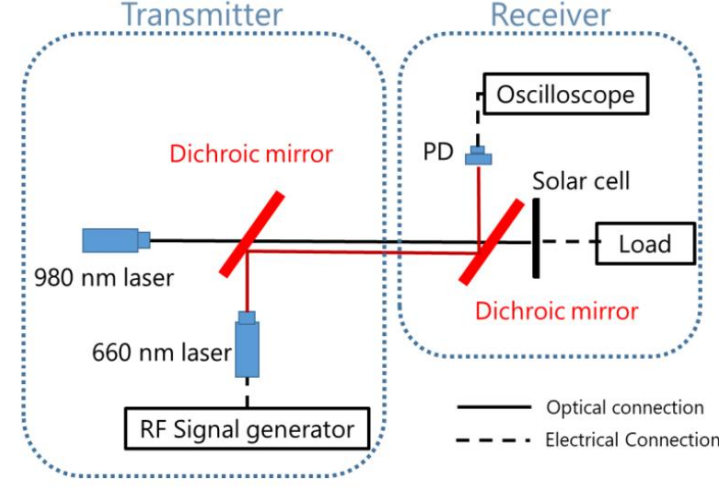

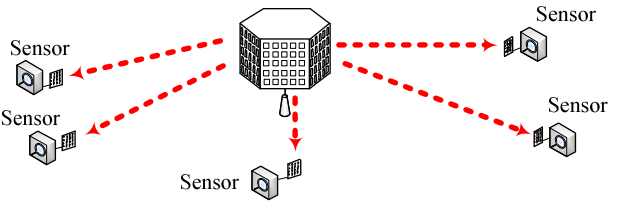




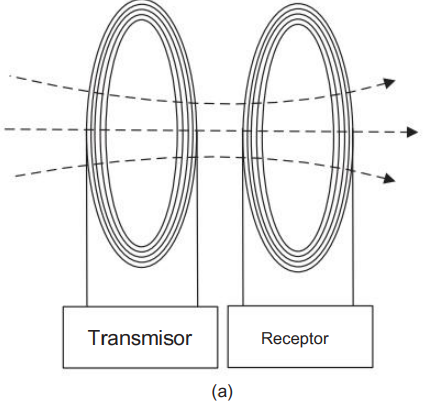



















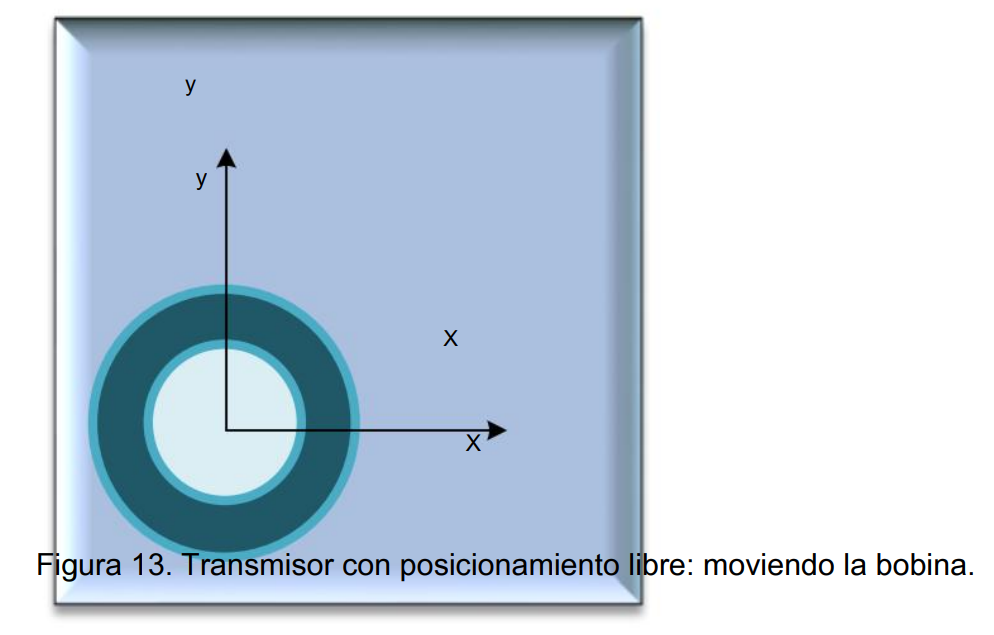
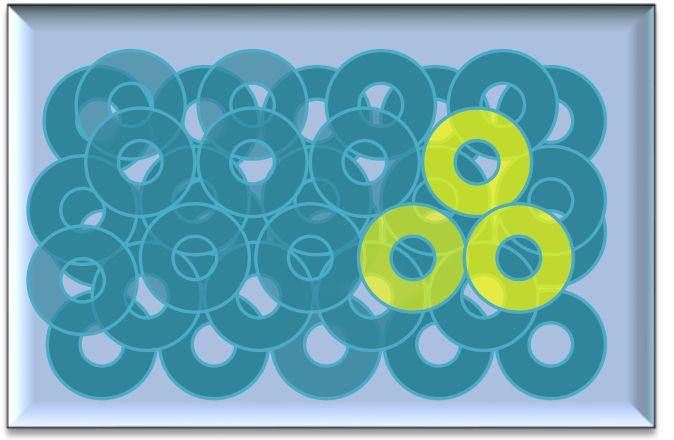



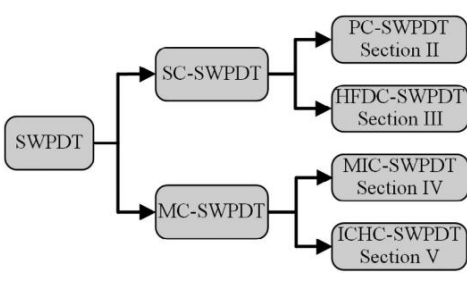


No hay comentarios.:
Publicar un comentario